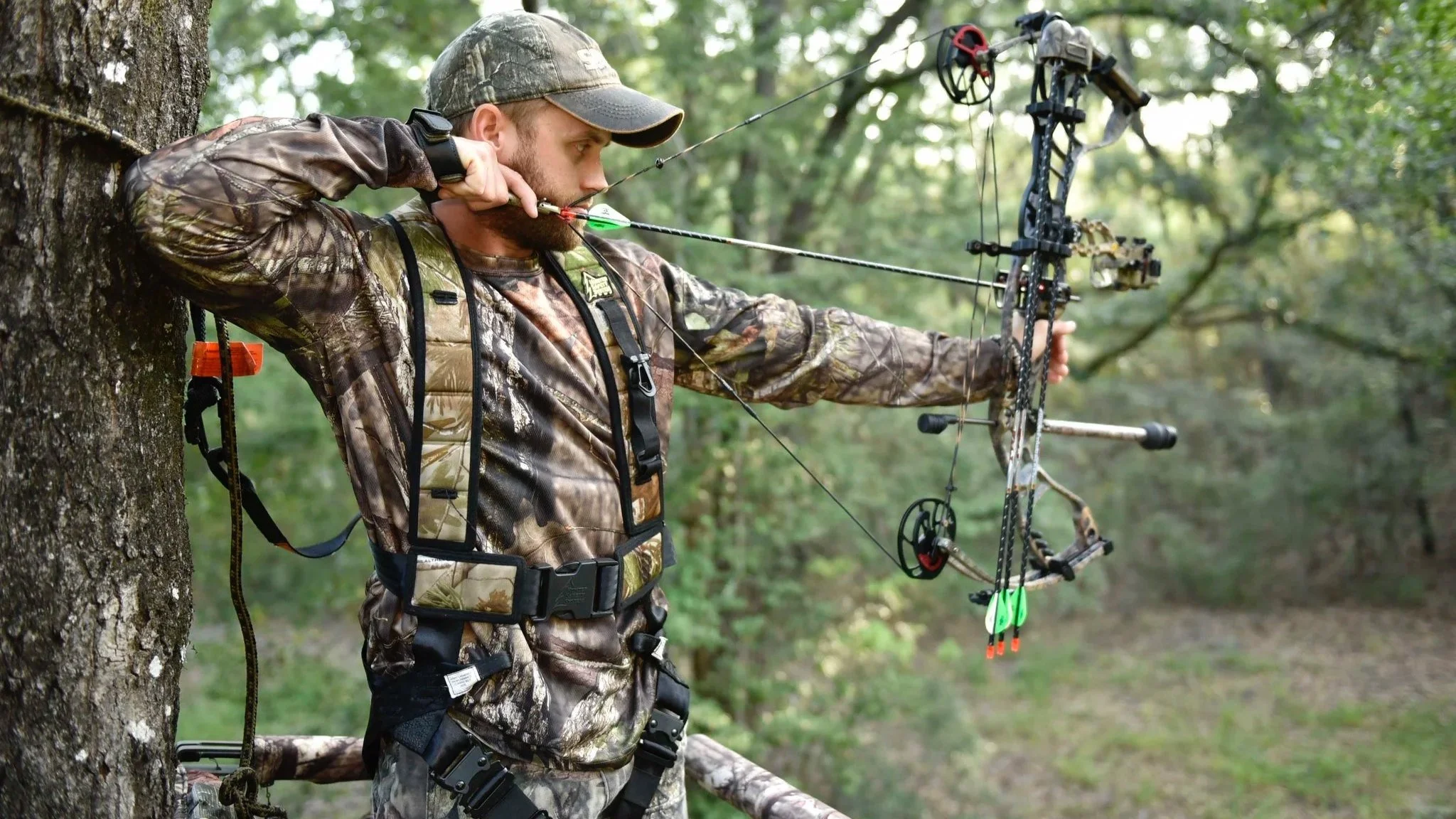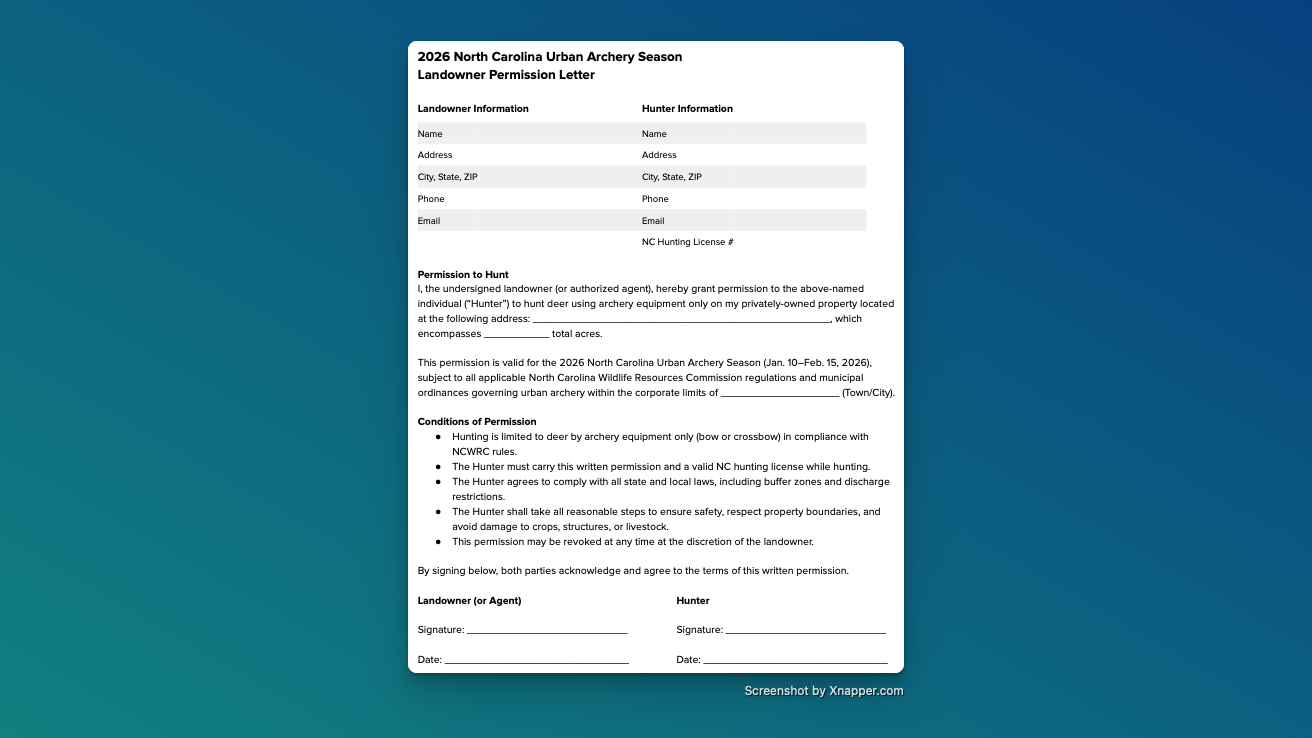Urban Archery: Backyard bowhunting for deer in North Carolina
Looking for hunting access or new opportunities to hunt? As urban deer populations grow, more North Carolina towns are choosing to allow archery hunting inside city limits. The 2026 N.C. Urban Archery Season runs January 10 through February 15. 
Over 60 towns, cities, and municipalities are expected to participate in 2026, although this number fluctuates based on which towns file opt-in letters. What you’ll find below is a practical guide for hunters who want to enjoy hunting in untapped areas with more deer than ever.
What Is Urban Archery?
Urban archery is a special extension of the deer archery season, but only within participating municipalities. It is not statewide, only towns that file to participate may allow hunting within their corporate limits. The intended outcomes of these initiatives are reducing vehicle collisions, protecting landscapes, minimizing deer over-population, and giving landowners additional options. 
Step-by-Step: How to Participate
1. Verify That Your Town Participates
Not all cities opt in each year. Below you can view an interactive map that indicates which towns participated in the 2025 season. Check your town’s website or contact local offices to verify.
2. Get State Hunting Permits and Licenses
You still need all the standard NC hunting licenses and must follow state regulations (bow equipment rules, tagging/reporting, etc.). Make sure you’re current on deer harvest reporting (either electronic or paper). 
3. Understand & Comply with Local Ordinances
Because each municipality can layer its own rules, it is critically important step to checking your area’s regulations. Here are some examples:
Lenoir, NC
Only archery allowed (no firearms) 
Hunting only on private property, with written permission from the landowner, and no hunting on public lands. 
No discharge within 100 ft of property line (a 100-ft “buffer”) 
Minimum parcel size is 3 acres (or combined contiguous parcels with permission) 
Must be 100 ft inside property line before shooting 
Indian Trail, NC
Hunting prohibited on public (town) land. 
Only on private land with permission. 
All state hunting rules apply. 
Wake Forest, NC
Private contiguous tracts of at least 5 acres required 
Hunters must show written permission from all landowners 
Arrows must be fired from at least 10 ft above ground, and toward the interior of the parcel 
Cannot discharge a bow within 50 yards of a dwelling or roadway right-of-way 
Also, cannot discharge within 100 yards of schools, churches, or town parks 
Norwood, NC
During urban archery, only bow and arrow or crossbow allowed – no firearms. 
Only on private land with written permission. 
Hunters must follow all state and local rules including tagging/reporting and retrieval obligations. 
These are only a few sample municipalities. Your town may have additional or stricter rules (buffers from schools, roads, minimal distances, allowed parcels, elevation of stands, etc.). Always get the ordinance or local guidelines in writing.
4. Scout & Secure Land Access
Identify land that meets local size rules and provides a safe bowhunting environment. Contact landowners well in advance. Get written, dated permission (within the last 12 months) and carry that permission on your person while hunting. Ensure that your shooting direction is inward toward your parcel, not outward across property lines. Many towns require that arrows remain within the boundaries of that parcel. Respect buffers (no shooting within a certain number of yards from dwellings, roads, churches, parks, etc.).
FREE SAMPLE: NC Urban Archery Landowner Permission Letter
Sign up below to download a free resource to help you get access to outdoor experiences, even in an urban context. The document was developed with North Carolina regulations in mind.
5. Safety, Shooting Ethics & Tracking
As always, know your target and what lies beyond it, like residential areas, roads, pets, etc. Use elevated stands or blinds when allowed. Some municipalities specify a minimum elevation above ground (e.g. 10 ft or more). Use proper arrowhead design (broadheads) consistent with state regulations. If you wound a deer, make every effort to track and recover it. Leaving carcasses or parts is usually prohibited. 
6. Tagging, Reporting & Processing
Tag the deer per state law before moving it. Report your harvest via the proper NC channels (online or phone). Respect any local requirements about carcass removal. Some towns may require prompt removal.
Bonus Tips for Bagging Your Limit … Within City Limits
Scouting is everything. Use trail cams as allowed by landowners and look for deer sign prior to the season.
Hunt during low-traffic hours. Early morning and late afternoons tend to be safer and more effective.
Sound control is critical. Use muffled or suppressed movement, quiet entry/exit, and approach downwind when possible.
Be conservative with shot opportunities. A bad shot in a residential setting can lead to accidents or legal trouble.
Stay up to date on changes. Municipalities may adjust their ordinances, buffer zones, or approved zones from year to year.
Educate neighbors. Communicate your intentions where appropriate to build rapport and reduce the risk of complaints.


